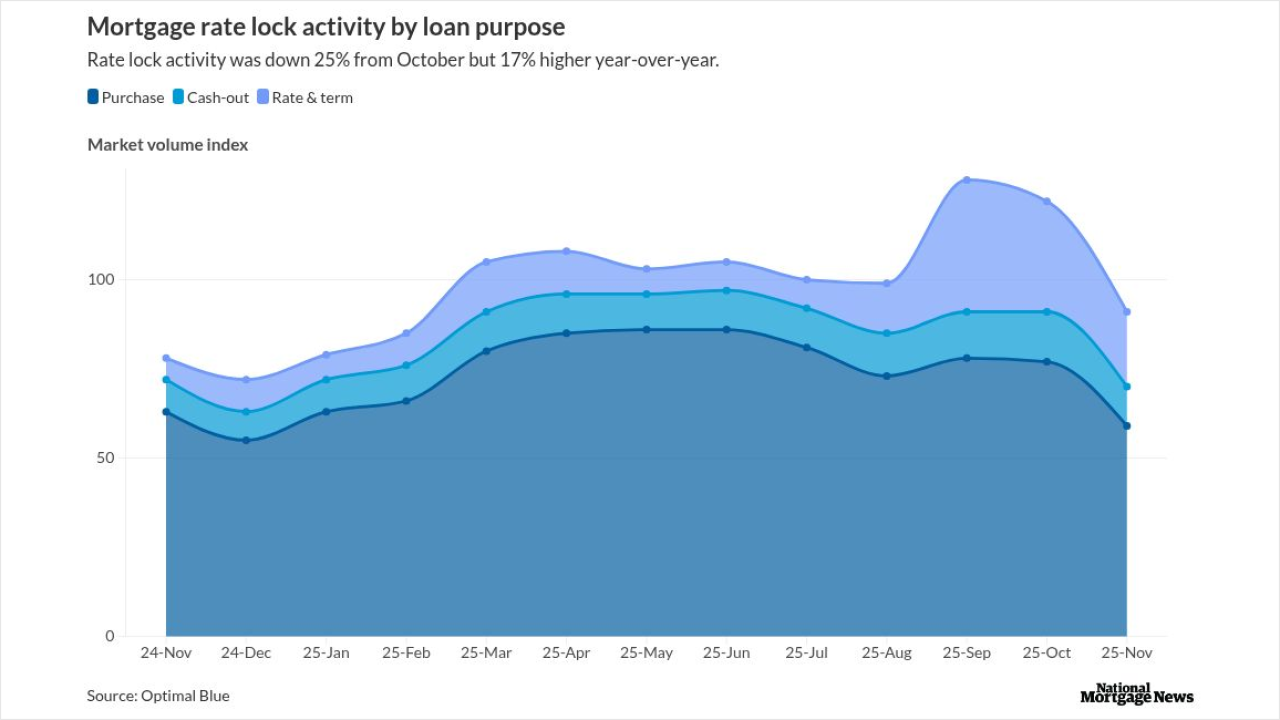Employment at nonbank mortgage lenders and brokers dropped by just under 1% between September and October, bucking recent national trends according to the Bureau of Labor Statistics latest jobs report.
Jobs in these segments fell to an estimated 328,100 in October, down from a revised 331,100 the previous month, but
While the recent pullback in mortgage-related employment can be attributed to normal seasonal patterns with sales expected to slow, some industry veterans recently issued more
But some positive signals emerged in recent weeks, arriving as
Mortgage job data is reported with a one-month lag from the general labor market, which showed numbers coming in stronger than expected, according to the BLS. The U.S. added another 199,000 jobs in November, rising from 150,000 a month earlier. Economists' estimated a gain of 185,000 on average, according to Bloomberg.
Meanwhile, unemployment decreased to 3.7% from 3.9%, also a consensus miss. Economists surveyed predicted the jobless level to be unchanged.
Homebuilding and other construction jobs flattened between October and November, but a small uptick brought the sector up for the eighth month in a row.
"We expect that homebuilders will continue to be the key source of housing supply next year, so we might see further employment growth in the sector, even if the economy slows as we anticipate," MBA Chief Economist Michael Fratantoni said in a press release.
Although the overall labor market performed better than anticipated, many experts still felt the data showed the U.S. economy was slowing at an agreeable pace to hit
"November's jobs report broadly signals that the labor market is cooling but remains strong, which is good news for the Fed and means that the likelihood of another rate hike remains low," said Ksenia Potapov, economist at First American.
"Overall, recent labor market data is signaling that a 'soft landing' scenario is increasingly likely."
But the data might lead to a mixed short-term result for the mortgage industry. Although a healthy economy is likely to improve consumer sentiment, the latest numbers have the potential to push mortgage rates back up in response, as they initially did on Friday.
"The recent rapid decline in rates — in particular, the mortgage rate is down nearly 80 basis points since the end of October — along with continued job growth are beneficial for homebuyers," said Fannie Mae deputy chief economist Mark Palim. "However, if labor markets remain this strong, we believe the pace of mortgage rate declines will likely not continue in the near term or may partially reverse."
Labor market strength also may throw longer term forecasts into question, leading the central bank to move cautiously in respect to a potential reduction of the federal funds rate. Following recent inflation reports and other data releases, analysts began asking how soon the Fed would begin to cut.
"Job market strength may be enough to keep the Fed cautious with respect to any comments regarding the path for rates at their December meeting. Inflation is declining, but further declines are likely dependent upon some slowing in the job market," Fratantoni said.



